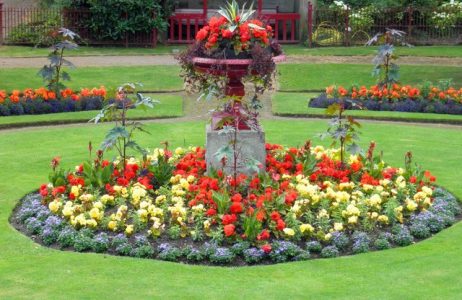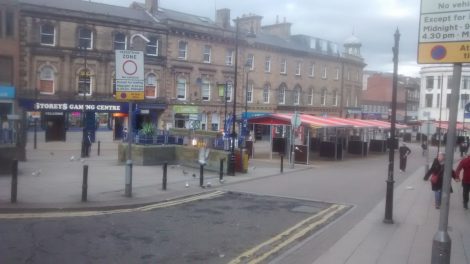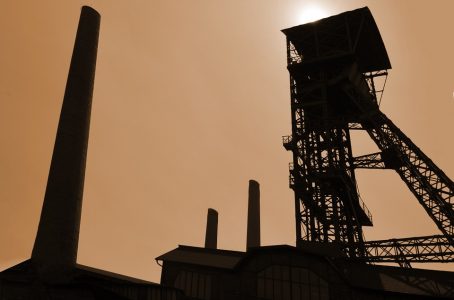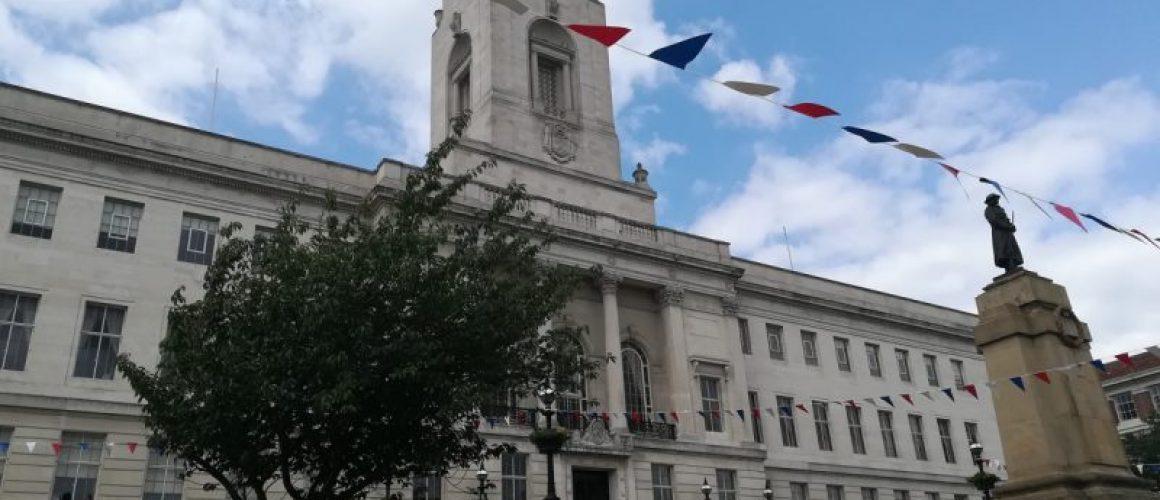Barnsley
Barnsley is a former mining town in South Yorkshire that’s proud of its industrial past. It’s famous for its markets, brass bands, and coal mining heritage. The people of Barnsley have proven to be a resilient bunch throughout the town’s history. According to the 2019 Census rehearsal, the town has a population of around 98,924.
Page Contents:
- Things to See & Do in Barnsley
- Pop Culture in Barnsley
- Barnsley Theatres & Nightlife
- Transportation in Barnsley
- Education in Barnsley
- Sport in Barnsley
- Shopping in Barnsley
- Re-development in Barnsley
- History of Barnsley
- Barnsley Trivia
Things to See & Do in Barnsley
The market town of Barnsley has many attractions on offer. There are plenty of fun activities and places to visit in this growing town. These range from museums and galleries to gardens and a priory.
Elsecar Heritage Museum
Based in the conservation village of the same name is Elsecar Heritage Centre. The site was used to house a variety of industries, including ironworks, engineering, and a distillery. Within the village, Earls Fitzwilliam had stone cottages built to house workers at the nearby colliery and foundry.
Elsecar Heritage Centre is still being used, but for different purposes. Visitors can walk around the area and see the steam and diesel locomotives, shops, and galleries. It’s also the home of many businesses, studios, and is even the location for special events.
Elsecar Heritage Railway
Attached to the same village as the centre is the Elsecar Heritage Railway. This runs a steam powered passenger service from the heritage centre to Rockingham Station on Sundays. People who take this service will find some fantastic local scenery on their travels.
Together, both attractions boast a park, craft workshop, and antiques centre which are open to the public.
Wentworth Castle Gardens

Now owned by the National Trust, a popular place to visit in Barnsley is Wentworth Castle Gardens. In the 18th century, the Earls of Strafford built the gardens on the site of the former Stainborough Castle, which existed before Wentworth. The original is now a folly within the gardens.
The grade I listed country house is no longer accepting visitors, however in 2017 Wentworth Castle Gardens opened to the public. Since then, it has become a popular tourist destination in the area. In 2003, the BBC reality TV series “Restoration” featured Wentworth Castle and filmed the project to restore both the castle and the grounds.
The extensive gardens feature many notable national collections of flowers, including rhododendrons, camellias, and magnolias. In 2013, the National Trust restored the Victorian Conservatory back to its former glory, making it a significant feature in the gardens.
Overall, there are 600 acres of parkland which contain several historic monuments. These include the Queen Anne’s Obelisk, the Rotunda, and the Duke of Argyle’s statue. The area also contains a deer park which is home to both red and fallow species.
Cannon Hall Museum, Park, and Gardens
Cannon Hall Museum, Park, and Gardens are another notable place to visit. Situated five miles west of the centre of Barnsley, it’s a popular place to visit and has lots to offer.
Situated five miles west of the centre of Barnsley, Cannon Hall Museum, Park, and Gardens is another notable place to visit. People across Yorkshire travel here for a fun family day out.
The property and site have been around for hundreds of years, with records dating back to the 1066 Domesday book. The current building received its present name from a 13th century inhabitant called Gilbert Canun. Since, it has featured in a tv show on Channel 5 called “Friday on the Farm” and now has its own called “A Farm Through Time”.
The museum, Cannon Hall Gallery, delves into the history of the military. It features displays related to the Light Dragoons and Royal Hussars regiments which explore their roles in famous battles such as “The Charge of the Light Brigade”. It also includes an array of paintings, furniture, glassware, and ceramics.
Cawthorne Park at Cannon Hall makes a great day out for the family. They have a range of themed areas, such as the Victorian Fairyland Garden. Within the grounds, you’ll find a maze, garden centre and adventure playground.
Monk Bretton Priory
The ruins of an old monastery called Monk Bretton Priory are in the village of Lundwood, which is 2 miles outside the centre of Barnsley. In 1154, Adam Fitzwane founded the priory and called it “The Priory of St Mary Magdalene”, which became an integral part of the original formation of Barnsley.
In 1538, the Reformation led by King Henry VIII disbanded Monk Bretton Priory like most monasteries in England. The ruin is now owned by English Heritage, where the public can visit for free. It’s open between 10am and 3pm every day of the week.
Pot House Hamlet
Silkstone, located around 4.5 miles from the centre of Barnsley, is home to a historical industrial site called Pot House Hamlet. Run by the Horsfield family, the site has been the home to several industries, including glasswork, pottery, grinding grain, and farming.
Pot House Hamlet was since converted to create an attractive area for visitors. The family run site hosts several shops for women’s clothing, plants, jewellery, toys, a dogs boutique, and a cafe. These shops are a mixture of family-run businesses owned by the Horsfield family and independent businesses.
Pop Culture in Barnsley
The market town of Barnsley has featured in popular culture several times. It’s arguably most famous for the book “A Kestrel for a Knave,” written by Barry Hines and its big screen adaptation, “Kes” directed by Ken Loach. It tells the story of a young boy from Barnsley called Billy, who takes up falconry in order to escape his inevitable path of working down the local coal mine.
Another popular film based in Barnsley is “Brassed Off” directed by Mark Herman in 1996. The film focuses on the story of the Grimethorpe Colliery band and their struggles to cope with the closure of their pit in the early 1990s.
Brass bands are synonymous with the Barnsley area, although they are present throughout the world in various forms. The popular Grimethorpe Colliery band was first formed in 1917 as a communal activity for pit workers.
They have since become one of the most successful colliery bands in the country. The brass band has won the national championships on four occasions and represented England in the European equivalent, finishing second in 2007. Grimethorpe Colliery band has outlived its coal mine counterpart, which shut in 1992.
Barnsley Theatres & Nightlife
Barnsley is rich in performances, shows and has an active nightlife. It’s home to three theatres: The Lamproom Theatre, Academy Theatre, and The Electric Theatre.
In 1999, Barnsley Theatre Trust converted a derelict Methodist chapel and opened The Lamproom’s doors for performances which seat 186 people. The theatre hosts a range of dance, musical, and comedy shows and is home to four theatre societies, including two youth companies.
The Academy Theatre opened in 2004 and seats 172 people within its purposely built auditorium. Located in Birdwell, around 4.5 miles outside of Barnsley town centre, it features both amateur and professional shows. The Academy Theatre is also home to a drama school and acts as a venue for both music concerts and plays.
The Electric Theatre is part of Barnsley college and within the town centre. It seats 180 people and contains two dance studios along with classrooms. The college theatre showcases student performances but also welcomes external touring shows. Shows include concerts, drama, musical and dance.
Barnsley has a well-developed nightlife with plenty of pubs, clubs and bars to choose from. Highlights include the themed Che Bar & Coco nightclub, and Volt nightclub – both are on Wellington Street.
In June, Barnsley hosts an annual music event called “Live” which is free for the public and open to all ages. It’s held in various venues around the market town and features many local bands.
Transportation in Barnsley
The meeting of two ancient roads established the South Yorkshire market town of Barnsley. It linked Barnsley to other popular towns and overtime the surrounding infrastructure has modernised around it.
Barnsley lies between a motorway “triangle” making it easy for people to access the M1, M62, and M18. These motorways connect Barnsley to places such as Leeds, Sheffield, and Hull. There are also several “A” roads which link the town to places like Doncaster and Huddersfield.
Barnsley Interchange station opened in 1850 on the Penistone-Hallam line. It has services which run to Leeds and Wakefield, Sheffield and Nottingham, and Huddersfield. Until 2008, there was also a direct line to London St Pancras.
In 2007, a new Interchange Bus station opened to the public. Its services run to other local Yorkshire places such as Wakefield, Doncaster, Sheffield, and Rotherham.
Education in Barnsley

Barnsley College is the sole provider of higher education in the town. It has several campuses dotted around and just outside of Barnsley town centre. The college offers a wide range of courses and apprenticeships for people aged 16+. Former pupils include Alex Turner from the Arctic Monkeys and kid’s TV presenter Sam Nixon.

Sport in Barnsley
The most dominant and popular sport within Barnsley is football. In 1887, a local priest formed the town’s team and called it Barnsley St. Peters. The new team spent their early days competing in the Sheffield & District league before joining the National Division Two in 1898. Since their formation, they played at Oakwell and nicknamed “The Tykes”.
Throughout 1996 to 1997, the South Yorkshire football club had a brief taste of top flight football before being relegated, much to the dismay of its fans. Five years later, in 2002, the club entered administration after financial losses made from the collapse of ITV Digital. Barnsley Football Club was only just saved from extinction when the current mayor, Peter Doyle, bought the club at the eleventh hour. Doyle sold it to two local business people who have owned the club ever since.
Besides football, another popular sport in Barnsley is cricket. Barnsley Cricket Club competes in the Yorkshire ECP County Premier League, which is the top tier of amateur cricket in the region. It’s noted for its steady supply of players who went to play for Yorkshire and England. Players include Geoffrey Boycott, Dickie Bird, – who also became an international umpire – Martyn Moxon, and Darren Gough.
Shopping in Barnsley
In 1991, the Alhambra shopping centre opened and has since been the main retail focal point of Barnsley town centre, which boasts 41 shop units. The Barnsley shopping centre has big high street names such as Primark, Next, and TK Maxx.
Barnsley is also home to its famous indoor and outdoor market which, combined, has 300 stalls including Barker’s Butchers and Devine’s Footwear. It has a wide variety of goods ranging from fashion, fresh flowers, bakeries and much more. The Indoor Market is open Monday to Saturday 8:30am – 4pm and the Outdoor Market is open every day except Thursday 8:30am – 4:30pm.
More recently, The Glass Works opened to create a modern way to shop. It’s home to retail, restaurants, cafes and leisure.
Re-development in Barnsley
Remaking Barnsley
In 2003, the Barnsley Council created an ambitious major redevelopment plan of the town called “Remaking Barnsley”. Since then, Barnsley has seen several developments to the town centre with a focus on attracting visitors and to make the overall feel of the town modern.
Several regeneration projects across the town have been involved. These included a new entertainment venue called The Civic, a digital media centre, a new town square, and a new train station, amongst other innovations, to revitalise Barnsley.
Experience Barnsley
One project that was part of the “Remaking Barnsley” development is the museum. Barnsley museum is centred in the town hall on Church Street and focuses on the history of the town and its people ranging from ancient times to the present day.
Throughout the year, exhibitions change and have ranged from photographs to archaeological artefacts. The Artefacts and Discovery Centre enables locals to research their family tree and learn about the history of their house.
The Civic
Another project was the re-development of “The Civic” theatre and entertainment venue. It had been closed for eleven years before it opened again in 2009. The venue has a 300-seat auditorium along with a variety of studios and workshop space for local and in-house productions. The yearly programme includes a mixture of plays, comedy, children’s, and dance shows.
Mandela Gardens
Attached to The Civic is the more recently developed Mandela Gardens. They provide a green space for the town centre and also host a range of outdoor events. The council designed the gardens to represent the surrounding countryside of Barnsley, with hills, rivers, and rocks.
Barnsley Clock
Overlooking the Mandela Gardens is the controversial £32,500 Barnsley Clock, which sits on the side of The Civic building. No longer working, the clock comprised red lights. A long line was the minutes, a shorter line was the hour, and the dot was the second. People didn’t realise it was a clock and when they did, they still couldn’t tell the time.
Barnsley Digital Media Centre
To further develop the town, Barnsley Digital Media Centre opened and has since helped to attract creative businesses to Barnsley. There are also several other developments planned for the future in order to transform Barnsley into a modern market town.
Since these developments made by the Barnsley Council, the market town has improved its image. It continues to build itself a modern future, whilst remaining close to its roots.
History of Barnsley
The 1066 Domesday book recorded the market town of Barnsley as “Berneslai”. It’s thought that the origin of the town’s name originated from the word Berne, meaning barn, and Lay, which is the old word for field.
A Small Village
200 people lived in Barnsley, which developed very little. During the 1150s, the monastery, based in Pontefract, became the owners of the land.
Two Ancient Roads
Monks settled in the area and together developed a brand new town at the meeting of two ancient roads. They ran from Sheffield and Wakefield to the North and South, and Huddersfield and Doncaster to the East and West.
Old Barnsley
The original village from the 1066 Domesday book later became known as “Old Barnsley”. As time passed, the village became empty as people moved away. Old Barnsley now lies in modern day Silkstone.

A Growing Town
The new town grew to around 600 people. In 1249, a weekly market was granted along with a four day fair at Michaelmas. At first, because of its location at the meeting of important roads, Barnsley became a hospitality town and a stop off point for people travelling between Leeds and London.
In the 17th century, taverns and inns began popping up. By this time, Barnsley was becoming a manufacturing town. Its first coal mines were sunk and famous glass-making factories produced and export their wares.
An act of Parliament in 1777 enabled the surrounding heaths and moorland to be built upon. This started Barnsley’s industrialisation and expansion.
Barnsley Canal
In 1802, the Barnsley Canal became a very important connection to the Aire-Calder Navigation System. It gave the wool factories of Wakefield, Leeds, and Bradford access to Barnsley’s coalfields, which powered them. The town’s population had grown to over 3,000 people, making it an important town in its own right.
Miners’ Strike

Arguably, the town’s most notorious moments came in the 1980s when Barnsley became the centre of the miners’ strike. The dispute divided the many mining communities within the district. In the end, all of Barnsley’s coal mines were closed down in 1994. It took years for the town to come to terms with the loss of its industry and still it continues to take effect.
Regeneration Project
In 2003, the Barnsley Council created a huge 30 year regeneration project with a purpose to make Barnsley a modern town. Barnsley returned to its hospitality roots and has become a desirable place to live because of its proximity to local cities such as Leeds, Sheffield, and Wakefield.
The development of Barnsley town centre has attracted modern business with the help of the digital media building. Barnsley is continuing to progress and move forward with the times. However, this former mining town will never forget its past and how it came to be what it is today.
Barnsley Trivia
Barnsley is home to the first ever bottle bank, which was first used in 1977. There are now around 50,000 across the country.
When the 1969 film “Kes” was released on video and later on DVD, it had to be dubbed into standard English for the US audience. Because of the strength of the regional Barnsley accent and dialect spoken by the characters in the film, Americans found it difficult to understand.
The original village of Barnsley lies in modern day Silkstone. The residents moved to higher ground, closer to the meeting of the two ancient roads — Sheffield to Wakefield, and Doncaster to Huddersfield.
There were 11 coal mines in the Barnsley district:
- Barnsley Main
- Cortonwood
- Darfield – merged with Houghton Main
- Dearne Valley
- Dodworth
- Goldthorpe
- Grimethorpe
- Hickleton Main – merged with Goldthorpe
- Houghton Main
- North Gawber – merged with Woolley
- Royston
In 2002, the council made plans to convert Barnsley into a “Tuscan hill town”. This would have made it similar to towns in northern Italy. If completed, there would be a surrounding wall and lights beaming out from the town hall.

